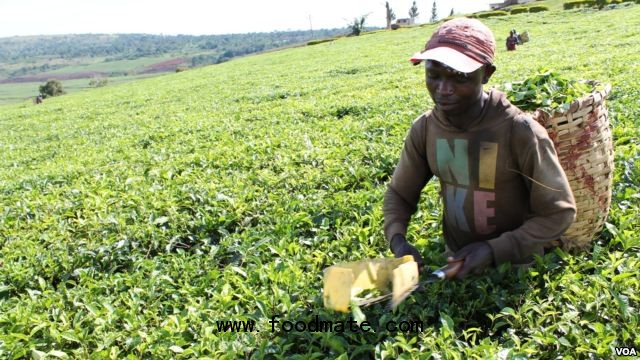
Tea drinkers around the world brew up tea bags marked “Kenya,” but most of them don't know some of it actually comes from Uganda.
One of the country's most important drivers of revenue, Uganda's tea industry has long been dogged by quality problems, and a further tightening of regulatory standards could spell disaster for the roughly 65,000 Ugandans who manufacture the country's third-largest export, which generates $100 million per year.
But outside Uganda, no one is drinking pure Ugandan tea.
“The quality of Ugandan teas is low. That is a fact, really," says George Ssekitoleko of the Uganda Tea Association, explaining that Ugandan teas are mainly for blending. "When our tea goes to Mombasa, that is the end of it being called Ugandan tea. That is where it disappears. It is all blended with other teas, and it goes out as Kenyan tea, mainly.”
One of the main problems facing Ugandan teamakers, he says, is finding enough workers to pluck tea leaves by hand.
“We have a shortage of labor in this country, and most of our people have resorted to using machines like pluckers instead of manual plucking," he says. "If you are using a machine, it does not select which ones to pluck and which ones to leave. So that is affecting us. I think now every factory is doing that.”
As a result, Ugandan teas fetch two-thirds the price of Kenyan teas at regional auctions in Mombasa - bad business for Ugandan farmers who pay to transport their harvests to Kenyan markets.
In response to complaints from buyers, Kenya recently imposed stricter standards on the quality of tea coming into Mombasa, and, according to Peter Kimanga, president of the East Africa Tea Traders Association, the World Trade Organization is attempting to raise tea standards worldwide.
“You find some of the grades that are being imported into Kenya, in other countries, are not allowed to be exported, like India or Sri Lanka," says Kimanga. "The WTO is trying to insist now that [the standards] should be made compulsory to all tea-producing countries.”
If this happens, he says, it would be a disaster for Ugandan tea, since 25 to 35 percent of it wouldn't meet export quality, cutting off access to the international buyers on whom the Uganda's tea producers depends.
An attitude problem
At a factory near Lugazi, in central Uganda, the Uganda Tea Corporation processes more than one million kilos of tea leaves per year, employing 700 people.
The company's lush green fields are filled with the sound of snipping, as workers use giant plastic scissors known as plucking shears to remove leaves from bushes. Shear plucking - less labor-intensive than hand plucking - tends to snip off more than the two leaves and a bud preferred by tea connoisseurs.
Job Kihara, a manager who has spent more than 20 years in the industry, says that although tea garden work can be grueling, the real problem is the mental attitude of laborers.
“Now getting labor and convincing somebody to come in the morning when it is wet, you are out there in the rain, some look at it as a job which is not dignified," he says. "So until it gains that level whereby it is actually taken as an honorable job, then we will always lack pluckers.”
Because of this, he says, there is little Ugandan tea growers can do to avoid the hated plucking shears.
“We have no alternative but to go the way of machine plucking, shear plucking, just to get the leaf off the table, because as long as its sitting on the table, then it is a loss to the company, the economy, everybody loses at the end of the day," he says. "So when our hands are tied, much as we do not like it, we have got to go that direction.”
The Uganda Tea Association says only 15 percent of suitable tea-growing land in Uganda is in use, giving the industry plenty of room to expand.
But with labor in short supply and quality standards changing, it is difficult to say whether this potential will be realized.





